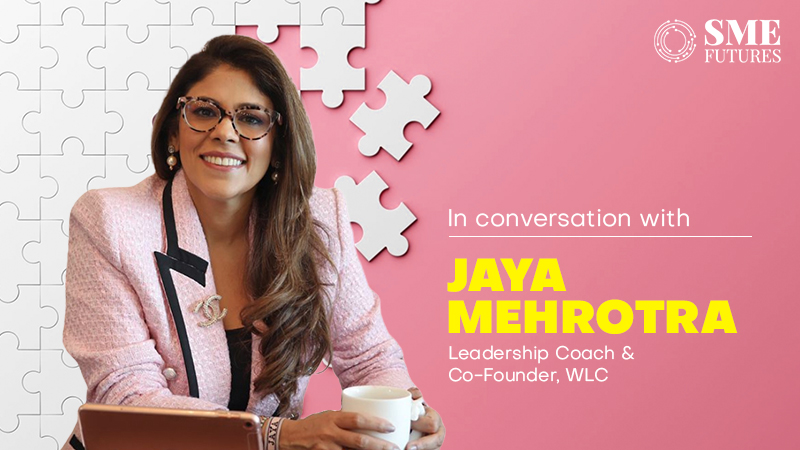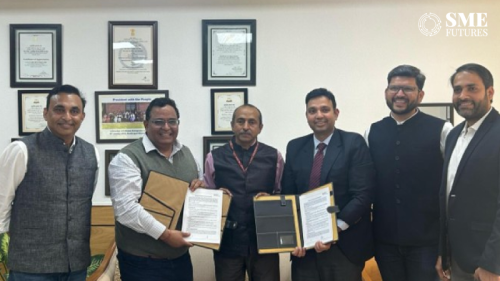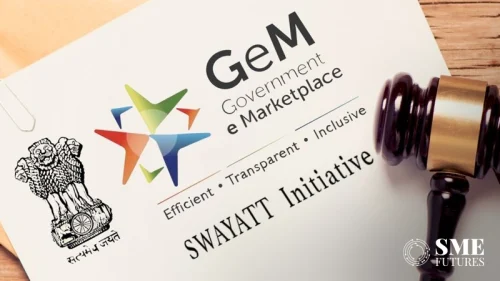To turn one’s ordinary business into an extraordinary one. That’s one of the main targets out of many for Indian businesses in 2023. Besides that, 96 per cent of MSMEs are optimistic that their profits will increase in 2023, according to a survey by NeoGrowth. But that requires the right systems and strategies, and a great leader to guide their team through the various business challenges that will come their way.
In a one-on-one with SME Futures, leadership coach and Co-Founder at WLC, Jaya Mehrotra, answers a few imperative questions about today’s work culture and the changing business scenario. He also talks about how business owners can become better leaders in 2023 and how strategic leadership can aid them to build an impactful business and produces better results.
Edited excerpts from the discussion.
What is your take on the glorification of hustle culture? Is there even such a concept as work-life balance?
On the surface, hustle culture may seem like a pop culture phenomenon, or a new-age work ethic trending on social media. Many of us are definitely sold out on the idea given the inflation rates, the rising debt, or the work-from-anywhere culture. Some of us who are enterprising, even get inspired by the start-up founders on social media, to take on a side hustle after working hours, desperately hoping to make those few extra lakhs of rupees. The lines between our personal and professional boundaries have gotten blurred since the digitization of work. For most of us, workaholism has consumed us in its entirety.
Also Read: Real Estate Sector meets Environment Minister to discuss construction ban
Stripped of its glamour, isn’t hustle culture plain old workaholism—accompanied by its undesirable side effects—burnout, fatigue, and sleep deprivation? While a lot of professionals are questioning the status quo which shaped how we have worked so far, many others have no choice but to give in to the hustle, until burnout forces them to halt.
Social media and the hustle culture are very aspirational, and we subconsciously soak in all these half-truths, without questioning their validity. We need to develop discernment and discipline, to know what to apply to our lives and what to leave behind. For example, the hustle culture exemplifies relentless work, being on-call twenty-four seven, but truth be told, several studies indicate that one can peak at their work schedule between 10a.m. and 2p.m., in a maximum of four to six hours, before they start feeling diluted. Isn’t this why many European nations such as the Netherlands, Austria, Belgium and Germany are experimenting with the four-day work calendar?
How do our working styles need to change in 2023?
As mentioned earlier, there is burnout, the biggest occupational hazard out there! We first heard of the quiet quitting trend at the height of the pandemic, which is still quietly looming in the background. Somewhere in between a pandemic and a global recession, we are all struggling to stay afloat and be inspired by our jobs. The hybrid work culture has proven to be a mixed blessing because while it shortened our commutes, and allowed us to be more ‘present’ for our families, it has also prolonged our workdays. It also does not allow us to ‘log out’ from work.
Effective leadership can tackle this by empowering their workforce with emotional toolkits to stay resilient, by using work-life balance as a cushion against stress, and by sowing the seeds to foster an inclusive culture that respects autonomy, innovation and freedom at work. We should also encourage heartfelt conversations at the workplace, between leaders and their teams who are appreciative. Finally, organisations should invest in mentors and coaches who are qualified, who have the right emotional toolkits and who will promote organisational well-being.
There is a work philosophy clash between the current leadership models and Gen Z, which is the current task force. What is the remedy in your opinion?
We have multiple generations working together under the same roof—Baby Boomers, Gen X, millennials, and Gen Z—who have very different motives and ambitions. So, how do we create an alignment between all the stakeholders? With millennials and Gen Z forming the majority of the workforce at present, it would be prudent to adapt an organisation’s work culture to suit their needs. The generation today wishes to have a more comprehensive environment where they feel heard and recognised, where they experience a sense of belonging, all while drawing a fat paycheque. They prefer participating in a gig economy rather than signing a full-time work contract. They have tweaked the old world nine-to-five work culture, and in some ways, ushered in a more flexible working style.
Also Read: Incentives to manufacturing, tax cuts among major expectations: ASSOCHAM
That being said, the decision makers in power in most workplaces, who are CEO’s and members of boards of directors, still come from a previous generation. Therefore, it is the generation gap that is contributing to this clash in philosophies. The solution would be to question the old work patterns, and create innovations which will empower an organisation’s personnel by providing them with flexibility and autonomy.
How has the pandemic changed or affected the space for leaders? Has there been any shift in their mode of conduct ?
The late 90’s style of top-down leadership has morphed into three generations of the workforce working side-by-side under one roof, displaying a stark diversity in their attitudes, perspectives, and emotions. We have already dissected the details in my previous response.
Luckily, there have been many optimistic changes in the pecking order and its mode of conduct after the onset of the pandemic. Old leadership styles have been sidelined and have been substituted with an empathetic style of leadership with heartfelt communication, which has helped everyone inch their way through this global fiasco. Even though many work trends still need to be revised to create and maintain a healthy work ambience, humanity is desired more than ever.
If leaders want to change the quiet quitting trend and want to stick around for the long haul, they should lead with empathy and courage, and be willing to include a lot of active listening in their communication styles. They need to be more authentic, inclusive, strategic, adaptive, and yet impactful.











